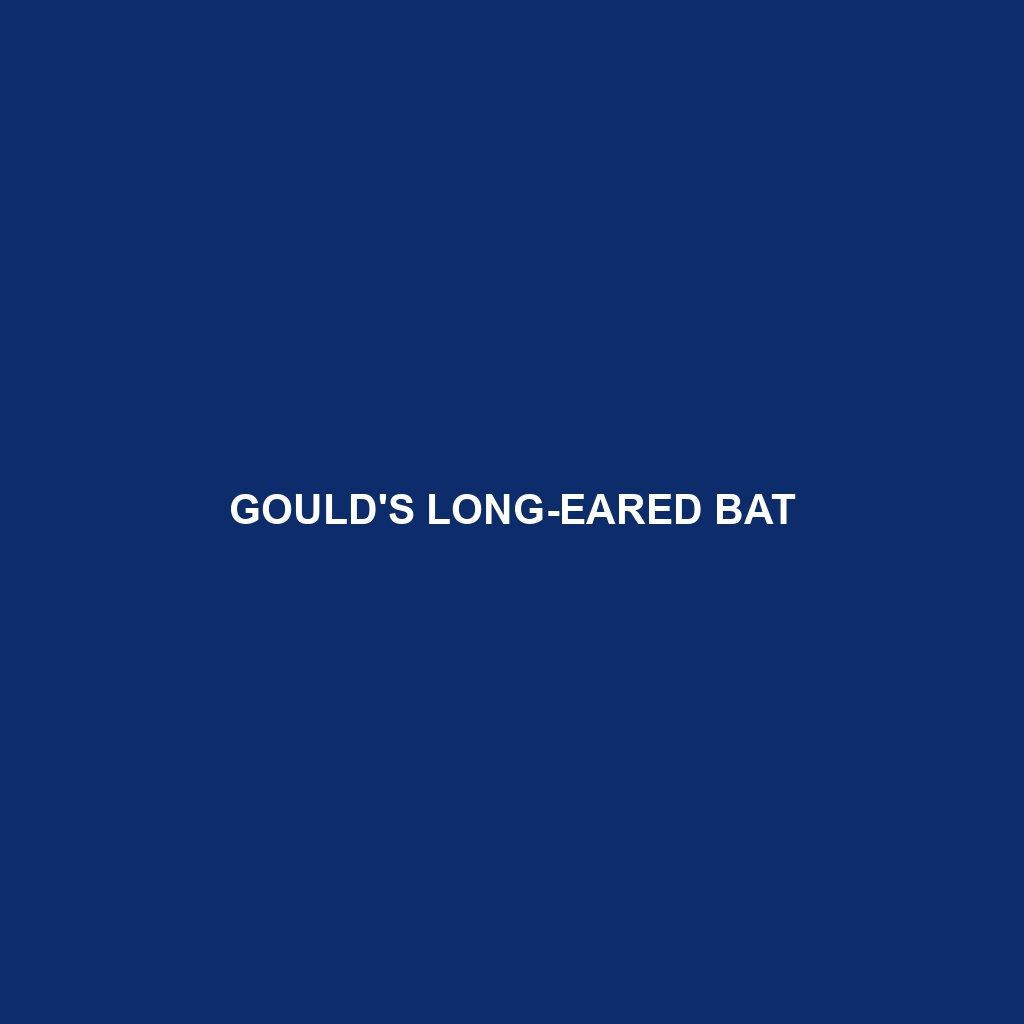Gould’s Long-eared Bat: An Overview
Common Name: Gould’s Long-eared Bat
Scientific Name: Nyctophilus gouldi
Habitat: Gould’s Long-eared Bat is primarily found in a range of environments across eastern Australia, particularly in woodlands, eucalyptus forests, and urban areas. They thrive in habitats with ample tree cover, which provide both roosting sites and foraging opportunities. This species has been spotted in regions including New South Wales, Queensland, and Victoria, reflecting its adaptability to both wild and altered environments.
Physical Characteristics: This medium-sized bat typically measures about 8 to 10 centimeters in body length with a wingspan reaching up to 25 centimeters. Its distinctive features include large ears that can measure around 4 to 5 centimeters, helping it to locate prey through echolocation. The fur is predominantly greyish-brown, with lighter underparts, providing effective camouflage in its woodland surroundings. Their elongated facial structure and characteristic wing shape make them easily recognizable.
Behavior: Gould’s Long-eared Bat exhibits nocturnal behavior, emerging at dusk to forage for insects. They are known for their unique flight patterns, often seen fluttering about foliage and using their keen sense of hearing to detect prey. Socially, they may roost in small colonies during the day, and during the breeding season, they display various courtship behaviors which can be fascinating to observe.
Diet: The diet of Gould’s Long-eared Bat primarily consists of moths and other flying insects. They are adept at hunting nocturnal insects, relying heavily on their echolocation abilities for efficient foraging. This species helps to regulate insect populations in its habitat, making it an essential player in the ecosystem.
Reproduction: Gould’s Long-eared Bat generally breeds between September and November. Female bats give birth to a single pup after a gestation period of about two months. Maternal care is intense, with mothers nursing their young until they are capable of foraging independently. Nesting often occurs in tree hollows, which offer safety and warmth for the pups upon birth.
Conservation Status: Currently, Gould’s Long-eared Bat is listed as “Vulnerable” under Australia’s Environment Protection and Biodiversity Conservation Act. Habitat loss, particularly due to land clearing and urban development, poses significant threats to this species, necessitating urgent conservation efforts to preserve their natural environment and populations.
Interesting Facts: One fascinating aspect of Gould’s Long-eared Bat is its ability to filter through dense vegetation while foraging, showcasing both agility and precision. Additionally, this bat species has been part of various ecological studies aimed at understanding bat diversity and its contribution to pest control.
Role in Ecosystem: Gould’s Long-eared Bat plays a crucial role in its ecosystem by controlling insect populations. As a natural predator of moths and other insects, it helps maintain balance in agricultural and wild landscapes. Furthermore, their presence can serve as an indicator of ecological health, reflecting the overall condition of their forest habitats. Protecting this bat contributes to the preservation of biodiversity in Australia.
